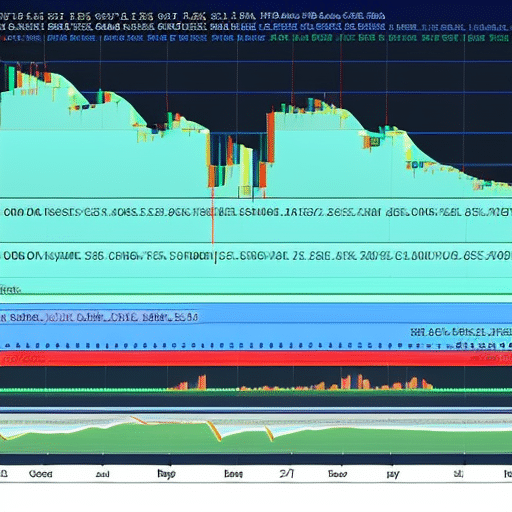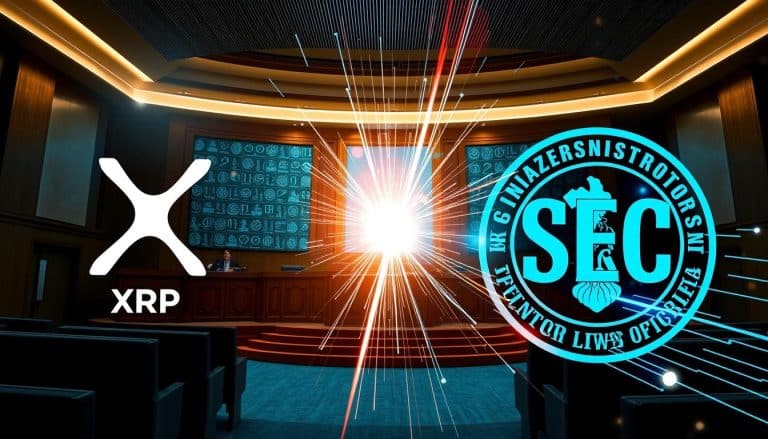Xrp Network Security And Technical Analysis
The XRP network is a decentralized, open source blockchain technology that facilitates the transfer of digital assets between two parties. It is designed to be more secure and efficient than traditional payment networks. This article will explore the security features of XRP, its technical analysis, and fundamental analysis for investors. Additionally, it will compare XRP to other cryptocurrencies and discuss potential investing strategies as well as the pros and cons associated with investing in XRP.
XRP uses advanced cryptography to ensure secure transactions between two parties. Moreover, it utilizes a consensus protocol known as Ripple Protocol Consensus Algorithm (RPCA) that validates transactions on its network by comparing them against a distributed ledger of transaction records maintained across multiple servers. Technical analysis of XRP focuses on analyzing market trends, price movements, volume data, order book activity, and other factors that can help predict future price movements. Fundamental analysis involves studying the underlying fundamentals of the asset such as supply/demand dynamics and adoption rates to determine its value.
Overview of XRP
XRP is a distributed, open-source payment network designed to enable secure and cost-efficient transactions between two parties. The transaction speed of XRP is much faster than that of other cryptocurrencies, because it only takes 4 seconds for an XRP transaction to take place. Additionally, the decentralization benefits provided by XRP are quite significant. This decentralized structure makes it harder for malicious actors to gain control of the network and disrupt its operations. As such, XRPs distributed ledger technology provides greater security as compared to other digital currencies. Furthermore, due to its status as an open source network, users have access to advanced technical analysis tools which can help them ascertain the market trends more accurately. These features ensure that users are able to make informed decisions when trading on the platform. With these advantages in mind, it is clear that XRP offers several security features for its users.
Security Features
The intricate security measures employed by the platform ensure robust protection for users and their assets. XRP is a secure network protocol that relies on its encryption technology to protect user data from malicious actors. It is secured through a combination of:
- Network Encryption: XRP employs advanced cryptographic algorithms to encrypt all transactions, making them virtually impossible to decipher or tamper with. The network also utilizes a sophisticated consensus mechanism that ensures only valid transactions are processed and stored in the blockchain.
- Code Audit: All code released by Ripple undergoes rigorous testing and review before it is accepted into production. This ensures any potential vulnerabilities are identified and addressed before they can be exploited. Furthermore, open source software tools such as OpenSSL, GPG, and SHA-256 are used to verify the integrity of each release package and guarantee that no unauthorized changes have been made during transit.
These features allow XRP to operate securely in an increasingly volatile digital landscape, protecting users from fraud or theft while ensuring their assets remain safe at all times. As such, the security measures implemented by Ripple make it one of the most reliable networks available today for both traditional financial services as well as more complex applications such as distributed ledger technology (DLT). With this strong foundation in place, it’s now time to move on to examining how technical analysis can be used to further assess XRP’s performance.
Technical Analysis
Analyzing the market performance of XRP, an adage comes to mind: ‘the trend is your friend’; and technical analysis provides a range of tools to assess its trajectory. Technical indicators such as moving averages, Bollinger Bands, Stochastic Oscillators, Relative Strength Index (RSI), Commodity Channel Index (CCI) can help traders and investors understand the price movements and trends. In addition to these technical indicators, risk management techniques like stop losses or trailing stops using these indicators also provide traders with the ability to manage their exposure in volatile markets.
| Indicators | Description | Usage |
|---|---|---|
| Moving Averages | It is a lagging indicator that helps identify trends in asset prices | To signal potential buy/sell opportunities when crossing above/below other MA’s |
| Bollinger Bands | Price channels used to measure volatility by plotting two standard deviations away from a simple moving average | Used for trading entry points or breakouts |
| Stochastic Oscillators | Compares closing price relative to recent high-low range | Used for momentum trading and as an overbought/oversold filter |
The table above outlines some of the key technical indicators used in XRP’s technical analysis; they are useful as both analytical tools and risk management strategies. These tools can help traders make smarter decisions about when to enter or exit positions while keeping risk levels low. By combining fundamental analysis with technical analysis, investors can gain a more holistic view of XRP’s movement in the market and better position themselves for long-term success. Transitioning into fundamental analysis will further expand on how investors can use fundamentals such as news headlines and economic data to inform their trading decisions.
Fundamental Analysis
Fundamental analysis is a powerful tool for investors to gain insights into the underlying forces that drive XRP’s performance in the market. It can provide valuable insight into the network infrastructure, risk management and other features of XRP. By understanding how these components affect XRP’s value, investors can make more informed decisions when making trading decisions. XRP has an impressive global network of distributed nodes, which helps ensure its security and stability. The technology behind Ripple also allows it to process transactions quickly at a low cost compared to other cryptocurrencies on the market. These factors help make XRP attractive option for users looking for fast, secure and cheap transactions. As a result, fundamental analysis is essential for investors looking for long-term growth with their investments in Ripple’s network. With this knowledge, they can assess whether or not investing in XRP is right for them based on their individual goals and objectives. In comparison to other cryptocurrencies, fundamental analysis can be used to compare the various features between different networks and determine which one would be best suited for an investor’s needs.
Comparison to Other Cryptocurrencies
Comparing XRP to other cryptocurrencies is an important step when considering how to best invest in digital assets. It is essential to understand the differences between the various available options, as each platform has its own unique features and risks associated with it. When comparing XRP to other crypto networks, there are several key areas of analysis, including risk management, scalability issues, transaction speed and cost, network security, and liquidity.
For instance, when looking at risk management strategies for XRP compared to other cryptos such as Bitcoin or Ethereum, it is evident that Ripple has put significant resources into making sure their network is secure and resistant against malicious attacks. Additionally, XRP also outperforms many of its competitors in terms of scalability due to its advanced consensus mechanism which allows for faster transactions at lower cost. Ultimately, these considerations are all important when weighing up the potential benefits of investing in a particular cryptocurrency. By taking into account all these factors it becomes easier to form a more informed opinion about which digital asset may be best suited for one’s investment strategy.
Investing Strategies
Investing in XRP requires a comprehensive strategy that considers the various risks and potential rewards associated with this digital asset. An investor should be aware of the price movements of XRP, as well as any changes in network security. Risk management is also important when investing in XRP, as it helps to reduce losses and maximize profits over time. Technical analysis can be used to identify trends and patterns in the market, which can help investors make better decisions about their investments. By monitoring these key variables, investors can create a more informed investment strategy for their XRP portfolio. To further improve success rates, investors should also consider the pros and cons of investing in XRP before making any commitments.
Pros and Cons of Investing in XRP
Analyzing the possible advantages and drawbacks of incorporating XRP into an investment portfolio can help investors decide if this digital asset is suitable for their needs. XRP has a number of unique features that may make it attractive to certain investors. These include:
- The ability to move money quickly and securely across global borders
- Its use as a bridge currency between different fiat currencies, making cross-border payments easier and more efficient
- The potential for Ripple’s future growth due to its increasing acceptance by banks, financial institutions, and other businesses
- Low transaction fees associated with using the XRP network compared to traditional payment systems
On the other hand, there are some risks when investing in XRP. These include:
- High volatility of XRP prices due to its lack of long-term track record in comparison to other established digital assets like Bitcoin or Ethereum
- Potential regulatory issues since Ripple is a centralized system controlled by one company rather than being decentralized like many other cryptocurrencies
- Uncertainty about how governments around the world will respond to Ripple’s technology and cryptocurrency trading in general
- Lack of liquidity on certain exchanges which can cause large fluctuations in price due to low trading volumes
Frequently Asked Questions
What is the minimum investment amount for XRP?
Investment in XRP requires minimal capital. Integration costs are relatively low, with transaction fees depending on the amount of XRP being transferred. Generally, a small sum is sufficient to get started.
How can I securely store XRP?
Secure storage of XRP requires a risk management approach involving robust network infrastructure. With the right safeguards in place, users can ensure their assets are protected from any potential threats. Analyzing security protocols and technical analysis is key to mitigating risks while storing XRP.
What is the best trading platform for XRP?
The best platform for trading XRP depends on one’s individual needs. Factors such as ripple mining, liquidity, and fees should be taken into consideration when choosing a suitable trading platform. A comprehensive analysis of the available options is recommended to ensure optimal outcomes.
Which wallets are compatible with XRP?
XRP is compatible with many wallets, including those offering increased scalability and faster transaction speeds. These wallets provide a secure environment to store XRP while offering an array of features such as advanced security protocols, multi-signature support, and additional functionalities.
What are the tax implications of investing in XRP?
The legal implications of investing in Ripple (XRP) are unclear. As a result, the taxation of XRP remains uncertain and is subject to change. Therefore, investors must carefully consider the potential tax obligations associated with their Ripple investments.





 Bitcoin
Bitcoin  Ethereum
Ethereum  XRP
XRP  Tether
Tether  Solana
Solana  USDC
USDC  Dogecoin
Dogecoin  TRON
TRON  Lido Staked Ether
Lido Staked Ether  Cardano
Cardano  Hyperliquid
Hyperliquid  Stellar
Stellar  Wrapped Bitcoin
Wrapped Bitcoin  Sui
Sui  Wrapped stETH
Wrapped stETH  Chainlink
Chainlink  Hedera
Hedera  Bitcoin Cash
Bitcoin Cash  Avalanche
Avalanche  LEO Token
LEO Token  Wrapped eETH
Wrapped eETH  Shiba Inu
Shiba Inu  WETH
WETH  Toncoin
Toncoin  Litecoin
Litecoin  USDS
USDS  WhiteBIT Coin
WhiteBIT Coin  Monero
Monero  Polkadot
Polkadot  Binance Bridged USDT (BNB Smart Chain)
Binance Bridged USDT (BNB Smart Chain)  Coinbase Wrapped BTC
Coinbase Wrapped BTC  Pepe
Pepe  Ethena USDe
Ethena USDe  Uniswap
Uniswap  Bitget Token
Bitget Token  Aave
Aave  Bittensor
Bittensor  Dai
Dai  Pi Network
Pi Network  Aptos
Aptos  Cronos
Cronos  NEAR Protocol
NEAR Protocol  Ethena Staked USDe
Ethena Staked USDe  Internet Computer
Internet Computer  OKB
OKB  Ondo
Ondo  Jito Staked SOL
Jito Staked SOL  Ethereum Classic
Ethereum Classic  BlackRock USD Institutional Digital Liquidity Fund
BlackRock USD Institutional Digital Liquidity Fund